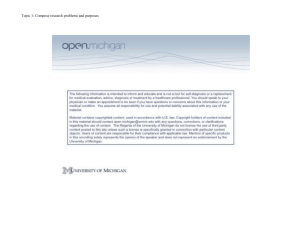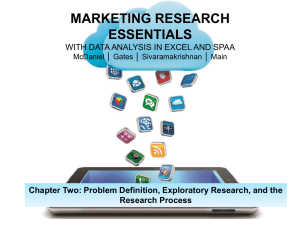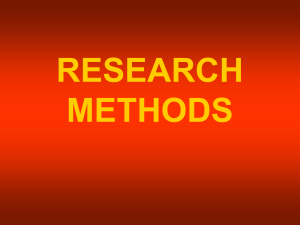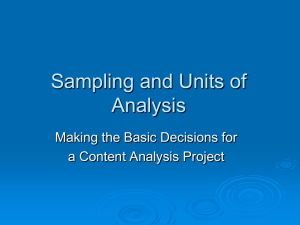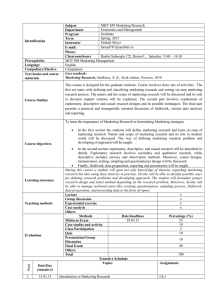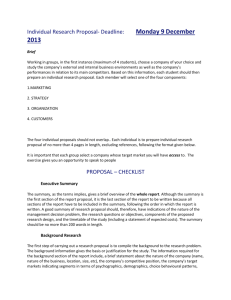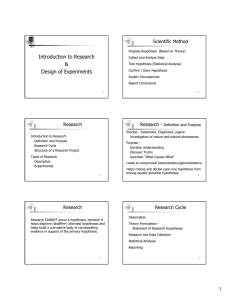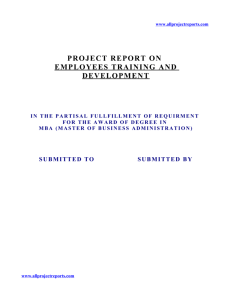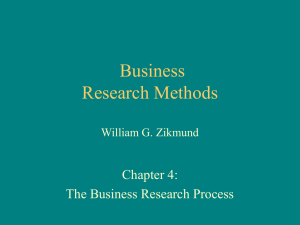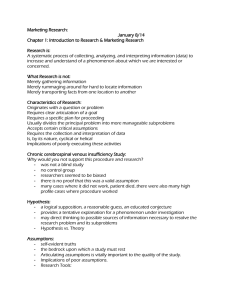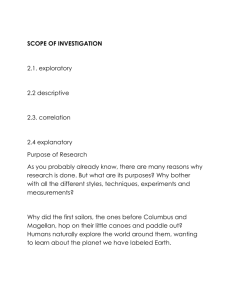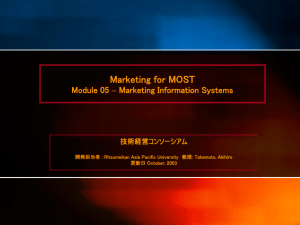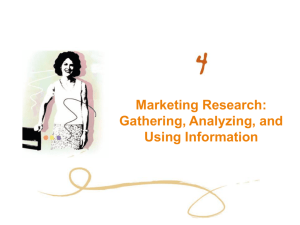concepts - The Catholic University of America
advertisement
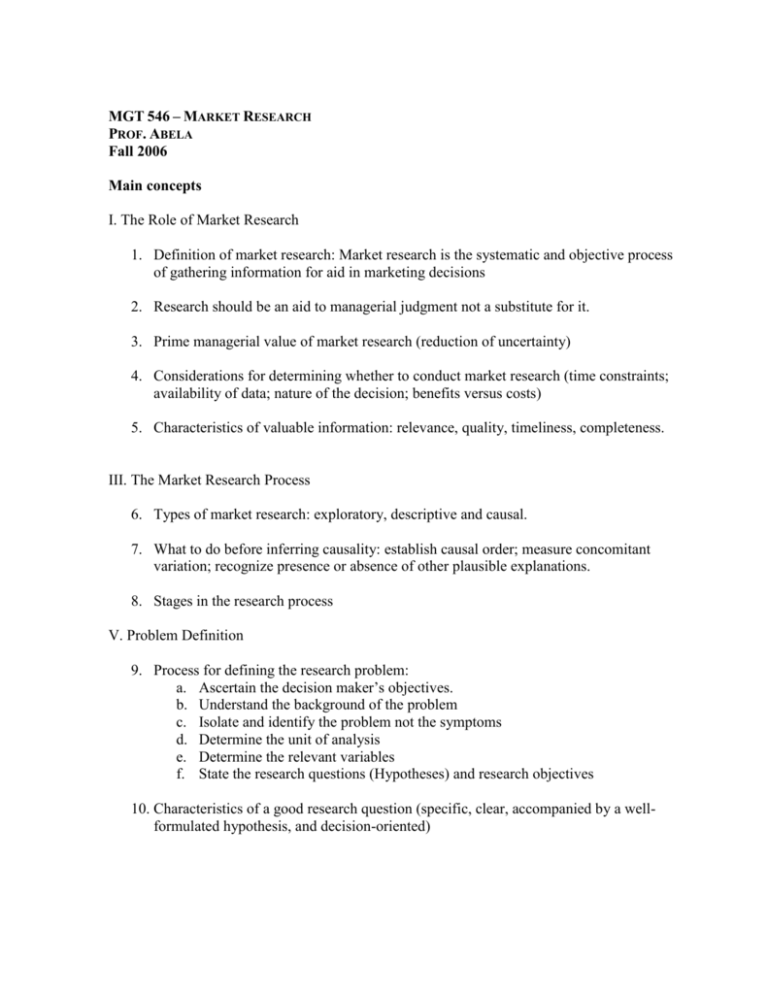
MGT 546 – MARKET RESEARCH PROF. ABELA Fall 2006 Main concepts I. The Role of Market Research 1. Definition of market research: Market research is the systematic and objective process of gathering information for aid in marketing decisions 2. Research should be an aid to managerial judgment not a substitute for it. 3. Prime managerial value of market research (reduction of uncertainty) 4. Considerations for determining whether to conduct market research (time constraints; availability of data; nature of the decision; benefits versus costs) 5. Characteristics of valuable information: relevance, quality, timeliness, completeness. III. The Market Research Process 6. Types of market research: exploratory, descriptive and causal. 7. What to do before inferring causality: establish causal order; measure concomitant variation; recognize presence or absence of other plausible explanations. 8. Stages in the research process V. Problem Definition 9. Process for defining the research problem: a. Ascertain the decision maker’s objectives. b. Understand the background of the problem c. Isolate and identify the problem not the symptoms d. Determine the unit of analysis e. Determine the relevant variables f. State the research questions (Hypotheses) and research objectives 10. Characteristics of a good research question (specific, clear, accompanied by a wellformulated hypothesis, and decision-oriented) VI. Exploratory Research 11. Reasons for conducting exploratory research (Diagnosing, screening, discovering) 12. Risks associated with exploratory research VII. Secondary Data 13. Advantages and Disadvantages 14. Sources of secondary data VIII: Overview of Survey Research 15. Types of survey errors a. Random sampling error b. Systematic error (bias) i. Respondent error ii. Administrative error IX. Communicating with Respondents 16. Typical survey methods and advantages and disadvantages of each 17. Five steps for checking a questionnaire design X. Observation 18. Types of mechanical observation (television monitoring, Web-site traffic monitoring, scanner-based research, measuring physiological reactions) XI. Experimental Research 19. Definition of experiment, and dependent and independent variables. 20. Experimental vs. control groups 21. Blinding 22. Internal vs. external validity XII. Test Marketing and Complex Experiments 23. Define test market, advantages and disadvantages of test marketing XIII. Measurement 24. Types of scales (nominal, ordinal, interval, ratio), analysis of scales (ex. 13.4), and importance of index measures 25. Criteria for good measurement: reliability vs. validity (ex. 13.5), sensitivity XIV. Attitude Measurement 26. Techniques for measuring attitudes: ranking, rating (simple, category, Likert, etc.), sorting, choice XV. Survey Design 27. Types of questions: open ended vs. fixed alternative, and implications of each 28. What to avoid (complexity, leading/loaded questions, ambiguity, double-barreled options, assumptions, burdensome questions) 29. Sequencing issues (order bias, anchoring effect) 30. Importance of pre-testing XVI. Sampling Designs and Procedures 31. Difference between sample, population and census; reasons for sampling; target population vs. sampling frame XVII. Determination of Sample Size (Review of statistics) 32. Descriptive vs. inferential statistics; sample statistics vs. population parameters XIX. Editing and Coding 33. Requirements for code construction (MECE) XX. Basic Data Analysis 34. Definition of descriptive analysis XXI. Univariate Statistical Analysis 35. Define hypothesis, null hypothesis and alternative hypothesis. 36. Hypothesis testing; type I and II errors XXV. Communicating Research Results 37. Parts of the report/presentation (summary, objectives, method, results, conclusions and recommendations)


